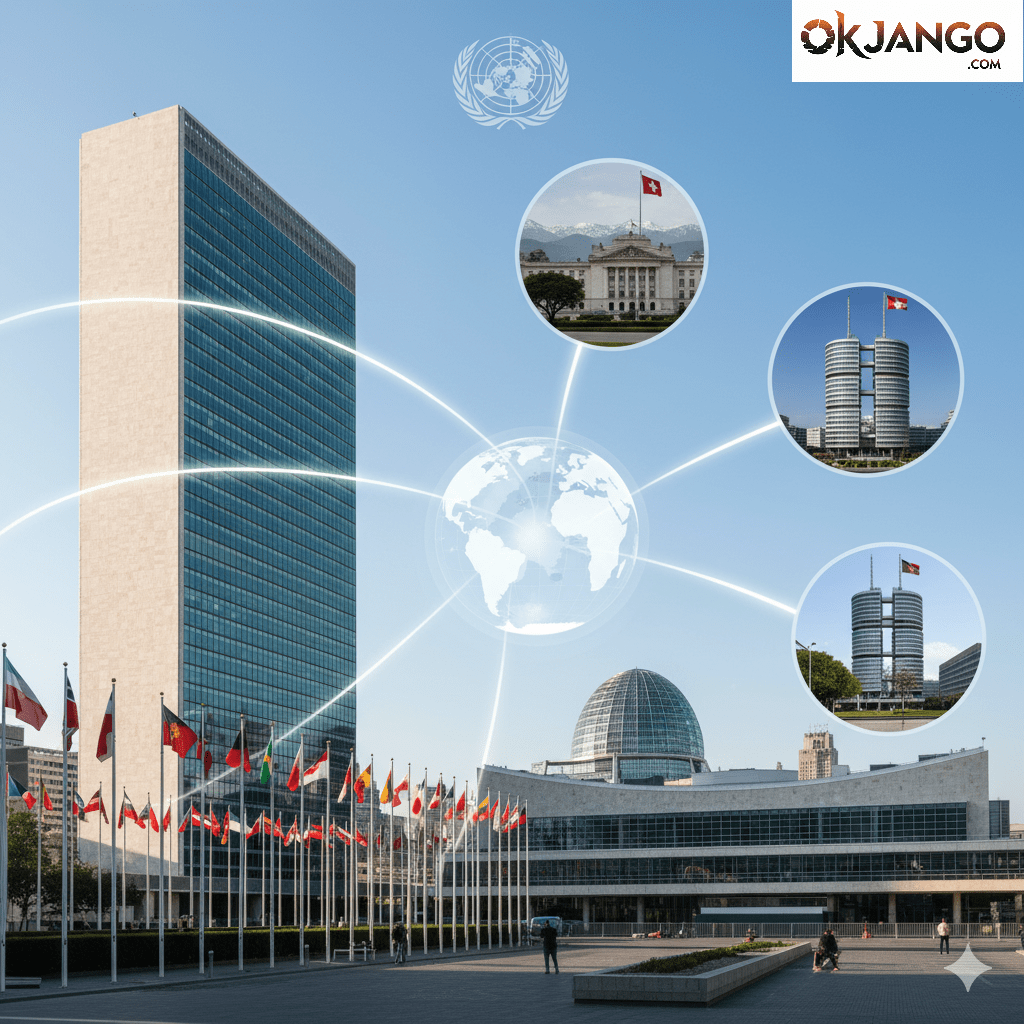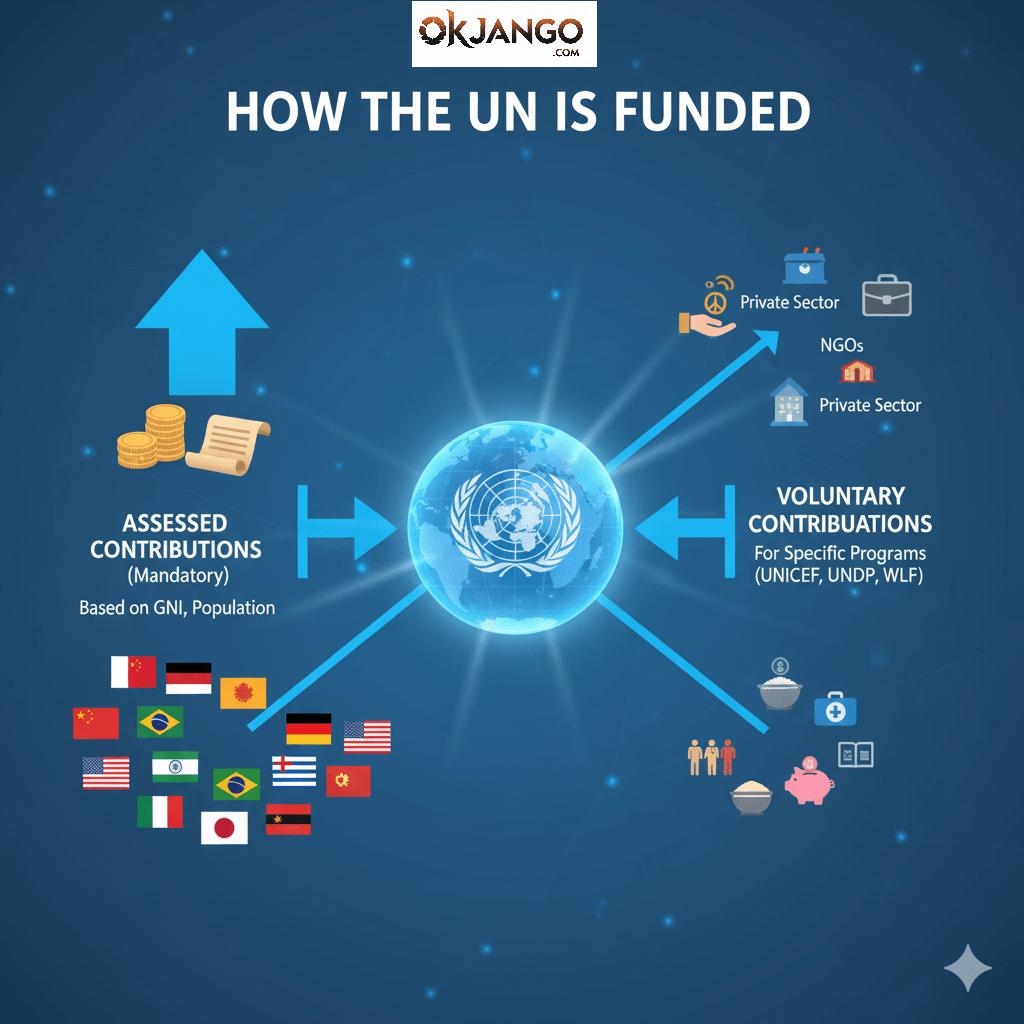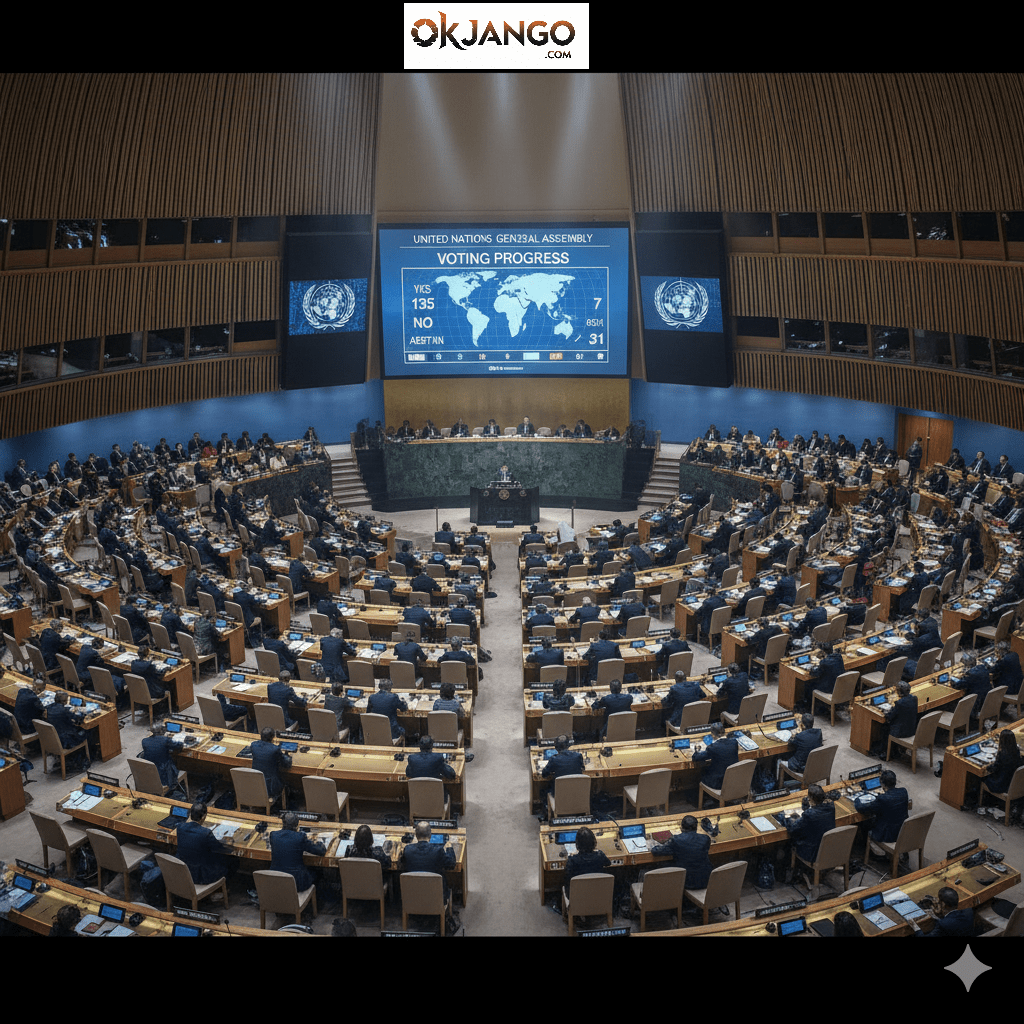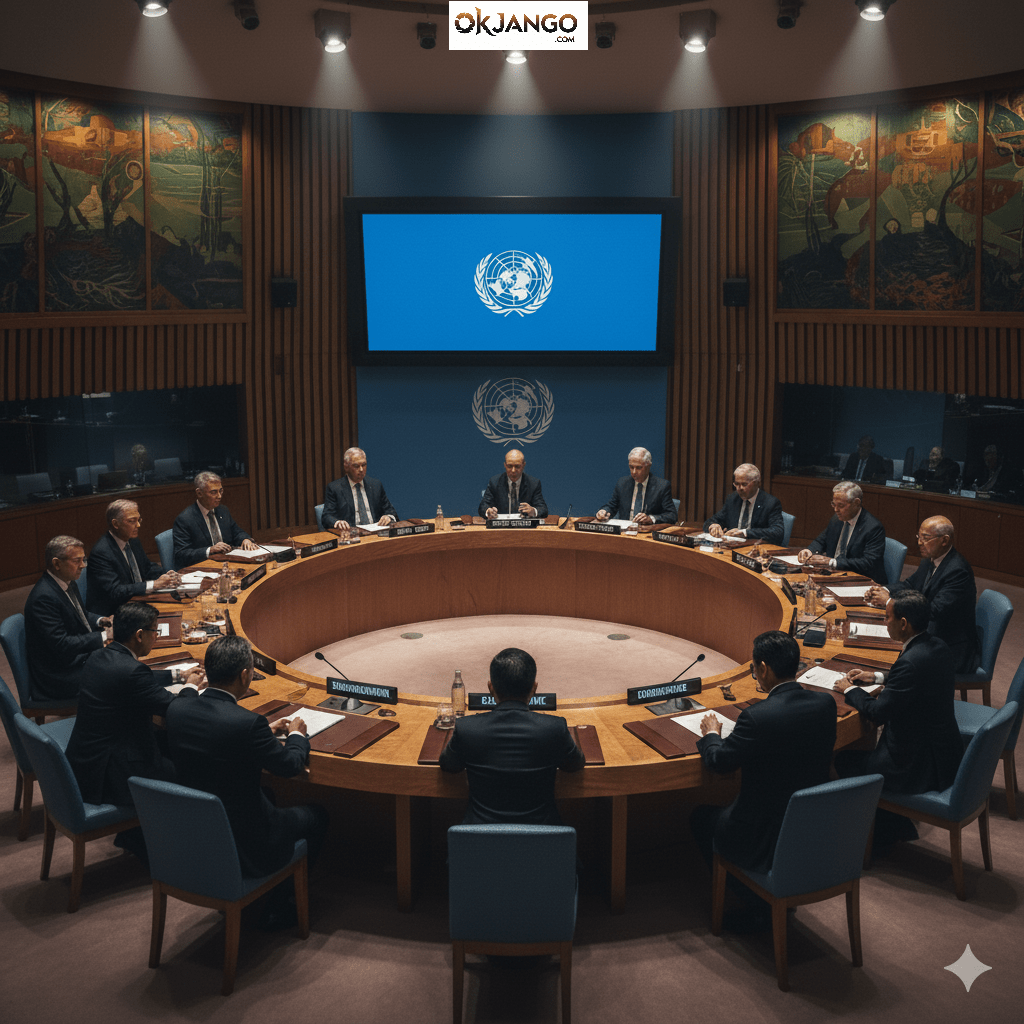The Global Assembly: Defining the United Nations Purpose
The United Nations (UN) is a global intergovernmental organization established to promote international cooperation and maintain world peace and security. It is essentially a forum for all of the world’s nations to discuss global issues and collectively find solutions. The UN and its system of related agencies work to address global problems in areas like peace, development, human rights, and humanitarian aid.
From San Francisco to New York: The UN’s Genesis and Home Base
The United Nations was founded by representatives of 50 countries who met in San Francisco to draw up the UN Charter.
- Founded By: The original 51 founding members included the main Allied powers from World War II: China, France, the Soviet Union, the United Kingdom, and the United States, along with a majority of other signatory nations.
- When: The Organization officially came into existence on October 24, 1945, after the UN Charter had been ratified. This day is now celebrated annually as United Nations Day.
- Headquarters: The main headquarters is in New York City, USA. The UN also has major offices in Geneva (Switzerland), Nairobi (Kenya), and Vienna (Austria).
The Family of Nations: Listing the 193 Member States
The United Nations is composed of 193 Member States (countries), representing almost every nation in the world.
Every member state, regardless of size or influence, has a seat and a vote in the General Assembly, the UN’s main deliberative body.
You can find the member states here
The United Nations Core Mandate: Peace, Progress, and Protecting Human Rights
The role of the UN is multi-faceted, derived from the core mission laid out in its Charter:
- Maintain International Peace and Security: This is its primary purpose, carried out through peacekeeping operations, conflict mediation, and sanctions. The Security Council holds the main responsibility for this.
- Develop Friendly Relations Among Nations: Based on the principle of equal rights and self-determination of peoples.
- Achieve International Cooperation: Solve international problems of an economic, social, cultural, or humanitarian character, and promote respect for human rights and fundamental freedoms.
- Be a Center for Harmonizing the Actions of Nations: Act as a central platform for nations to meet and work towards these common goals.
Securing the Mission: How the UN Budget and Agencies are Financed

The UN is funded in two main ways:
- Assessed Contributions (Mandatory): These are compulsory payments from Member States to fund the core UN budget (covering operational costs, peace missions, etc.).
The amount each country pays is based on a complex formula that considers factors like Gross National Income (GNI), population, and a country’s debt situation. - Voluntary Contributions: These are funds donated by Member States and other partners (e.g., private sector, NGOs) for specific UN programs, funds, and specialized agencies (like UNICEF, UNDP, and the World Food Programme).
Most of the UN’s humanitarian and development work is funded through these voluntary contributions.
The Voice of Diplomacy: Understanding the Six Official UN Languages
The United Nations has six official languages. These are used in all intergovernmental meetings, official documents, and key communications:
- Arabic
- Chinese
- English
- French
- Russian
- Spanish
The Global Leadership: Key Figures Guiding the United Nations
As of 2025, the key leadership positions are:
| Position | Current Holder | Country of Origin |
| Secretary-General | António Guterres | Portugal |
| Deputy Secretary-General | Amina J. Mohammed | Nigeria |
| President of the General Assembly | (Varies annually – typically an Ambassador) | (Rotation of geographical groups) |
| President of the Security Council | (Rotates monthly among the 15 members) | (Rotation) |
The Power to Decide: UN Voting in the General Assembly and Security Council
Voting mechanisms differ between the main bodies:
1. General Assembly (GA)

- Structure: Composed of all 193 Member States, each with one vote.
- Voting:
- Simple Majority: Decisions on routine matters are passed by a simple majority (more than half) of members present and voting.
- Two-Thirds Majority: Decisions on important questions—such as recommendations on peace and security, admission of new members, or budgetary matters—require a two-thirds majority of members present and voting.
- Impact: GA resolutions are not legally binding on governments, but they carry the moral authority and weight of world opinion.
2. Security Council (SC)

- Structure: 15 Member States: 5 permanent members (China, France, Russian Federation, United Kingdom, and the United States) and 10 non-permanent members elected for two-year terms.
- Voting:
- Procedural Matters: Require an affirmative vote of at least 9 members.
- Substantive Matters (e.g., sanctions, peacekeeping): Require an affirmative vote of 9 members, including the concurring votes of all five permanent members. A single negative vote by any of the five permanent members constitutes a veto, blocking the resolution.
Saving Lives Worldwide: The UN’s Critical Humanitarian Impact
Humanitarian action is one of the most visible and impactful aspects of the UN’s work, typically led by agencies like the World Food Programme (WFP), UNICEF, and the UN Refugee Agency (UNHCR). Key areas include:
- Disaster and Crisis Response: Providing immediate relief (food, water, shelter, medical aid) following natural disasters, conflicts, and complex emergencies worldwide.
- Refugee Protection and Aid: Offering protection, shelter, and basic necessities to refugees and internally displaced persons fleeing persecution and conflict.
- Child Welfare and Health: Conducting global vaccination campaigns, providing nutritional support, and promoting children’s rights and education in vulnerable areas.
- Food Security: Delivering food assistance to people facing hunger and famine due to conflict or climate change (WFP is the world’s largest humanitarian organization addressing hunger).
Relevant Reference Links
- Official United Nations Website: https://www.un.org/
- UN Charter (Founding Document): https://www.un.org/en/about-us/un-charter
- List of UN Member States: (Search for “UN Member States” for the official list on the UN site)
- UN Peacekeeping: https://peacekeeping.un.org/
- UN Humanitarian Agencies (WFP, UNICEF, UNHCR, etc.): (Can be searched individually, e.g., “World Food Programme official website”)
Read more blogs at OkJango.com
Frequently Asked Questions (FAQs)
What is the primary goal of the United Nations?
The primary goal is to maintain international peace and security, develop friendly relations among nations, and achieve global cooperation on social, economic, and humanitarian issues.
How many countries are in the UN today?
As of today, the United Nations has 193 official Member States.
Where is the UN’s main headquarters located?
The main UN headquarters complex is located in New York City, USA.
Who is the current Secretary-General of the UN?
As of 2025, the current UN Secretary-General is António Guterres from Portugal.
Which five countries have veto power in the Security Council?
The five permanent members with veto power are China, France, the Russian Federation, the United Kingdom, and the United States.
Is the UN a World Government?
The UN is not a world government and does not create binding international laws, with one major exception. It operates on the basis of the sovereign equality of all its members. The organization is a forum for international cooperation and debate. The one exception is that resolutions passed by the Security Council under Chapter VII of the UN Charter are legally binding on all member states.
What is the Core Difference Between the General Assembly and the Security Council?
The key difference lies in power and representation:
Security Council (UNSC): The body with the primary responsibility for international peace and security. It has 15 members (5 permanent, 10 non-permanent), and its resolutions on conflict are legally binding on all Member States.
General Assembly (GA): The main deliberative body where all 193 Member States have an equal vote. Its resolutions are generally non-binding recommendations (except on internal issues like the budget).
What is the UN’s Role in Fighting Climate Change?
The UN plays a central role through the United Nations Framework Convention on Climate Change (UNFCCC), the parent treaty for landmark agreements like the Paris Agreement. The UN hosts the annual global climate talks (COPs), provides scientific data through its agencies, and helps vulnerable countries with adaptation, mitigation, and financing to combat the climate crisis.
What is a “Non-Member Observer State” and Who Are They?
A Non-Member Observer State is a non-member entity that has been granted the right to participate in the UN General Assembly’s work, but without the right to vote on resolutions. This status is granted by a resolution of the General Assembly. Currently, the two Non-Member Observer States are the Holy See (Vatican City) and the State of Palestine.

